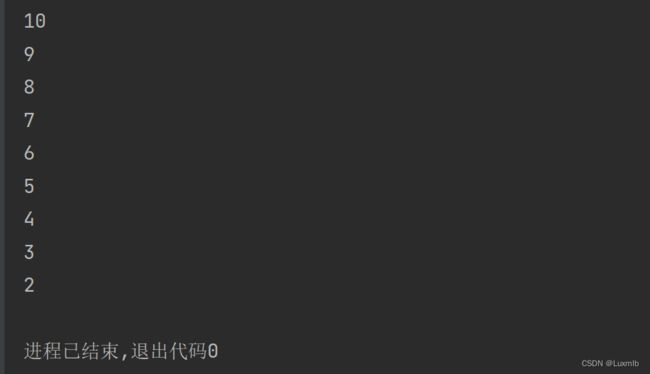OJ Prime Gap
目录
1.题目
2.中文翻译
3.题意
4.代码
5.知识点
range的倒序处理:
1.题目
Prime Gap
Description
The sequence of n − 1 consecutive composite numbers (positive integers that are not prime and not equal to 1) lying between two successive prime numbers p and p + n is called a prime gap of length n. For example, ‹24, 25, 26, 27, 28› between 23 and 29 is a prime gap of length 6.
Your mission is to write a program to calculate, for a given positive integer k, the length of the prime gap that contains k. For convenience, the length is considered 0 in case no prime gap contains k.
Input
The input is a sequence of lines each of which contains a single positive integer. Each positive integer is greater than 1 and less than or equal to the 100000th prime number, which is 1299709. The end of the input is indicated by a line containing a single zero.
Output
The output should be composed of lines each of which contains a single non-negative integer. It is the length of the prime gap that contains the corresponding positive integer in the input if it is a composite number, or 0 otherwise. No other characters should occur in the output.
Sample Input
10
11
27
2
492170
0Sample Output
4
0
6
0
1142.中文翻译
素数间隙
题目描述:
位于两个连续素数p和p+n之间的n−1个连续复数(非素数且不等于1的正整数)的序列称为长度为n的素数间隙。例如,在23和29之间的›24、25、26、27、28›是长度为6的主间隙。
你的任务是编写一个程序来计算,对于给定的正整数k,包含k的素数间隙的长度。为了方便起见,在没有素数间隙包含k的情况下,长度被认为是0
输入:
输入是一系列行,每行包含一个正整数。每个正整数都大于1,并且小于或等于第100000个素数,即1299709。输入的末尾由一条包含单个零的线表示。
输出:
输出应该由行组成,每行包含一个非负整数。如果输入中包含相应的正整数,则为素数间隙的长度,否则为0。输出中不应出现其他字符。
样例输入:
10
11
27
2
492170
0样例输出:
4
0
6
0
1143.题意
输入一个数,若为素数则输出0,非素数时,用向后到达的第一素数减去向前的第一个素数。
4.代码
#encoding=utf-8
#素数判定
def isprime(num):
if num<2:
return False
else:
for i in range(2,int(num**1/2)+1):
if num%i==0:
return False
return True
#计算大于这个合数的第一个素数和小于这个合数的第一个素数的差
def prime_gap(num):
for i in range(num,1,-1):
if isprime(i):
minprime=i
break
while True:
num+=1
if isprime(num):
maxprime=num
break
return maxprime-minprime
#保存输出结果的list
output_list=[]
#主程序
while True:
num=int(input())
if num==0:
break
else:
if isprime(num):
output_list.append(0)
else:
output_list.append(prime_gap(num))
#输出
for i in output_list:
print(i)
5.知识点
这道题和OJ Digit Primes强调的知识点一样,唯一多的一点就是:
range的倒序处理:
for i in range(10,1,-1):
print(i)
